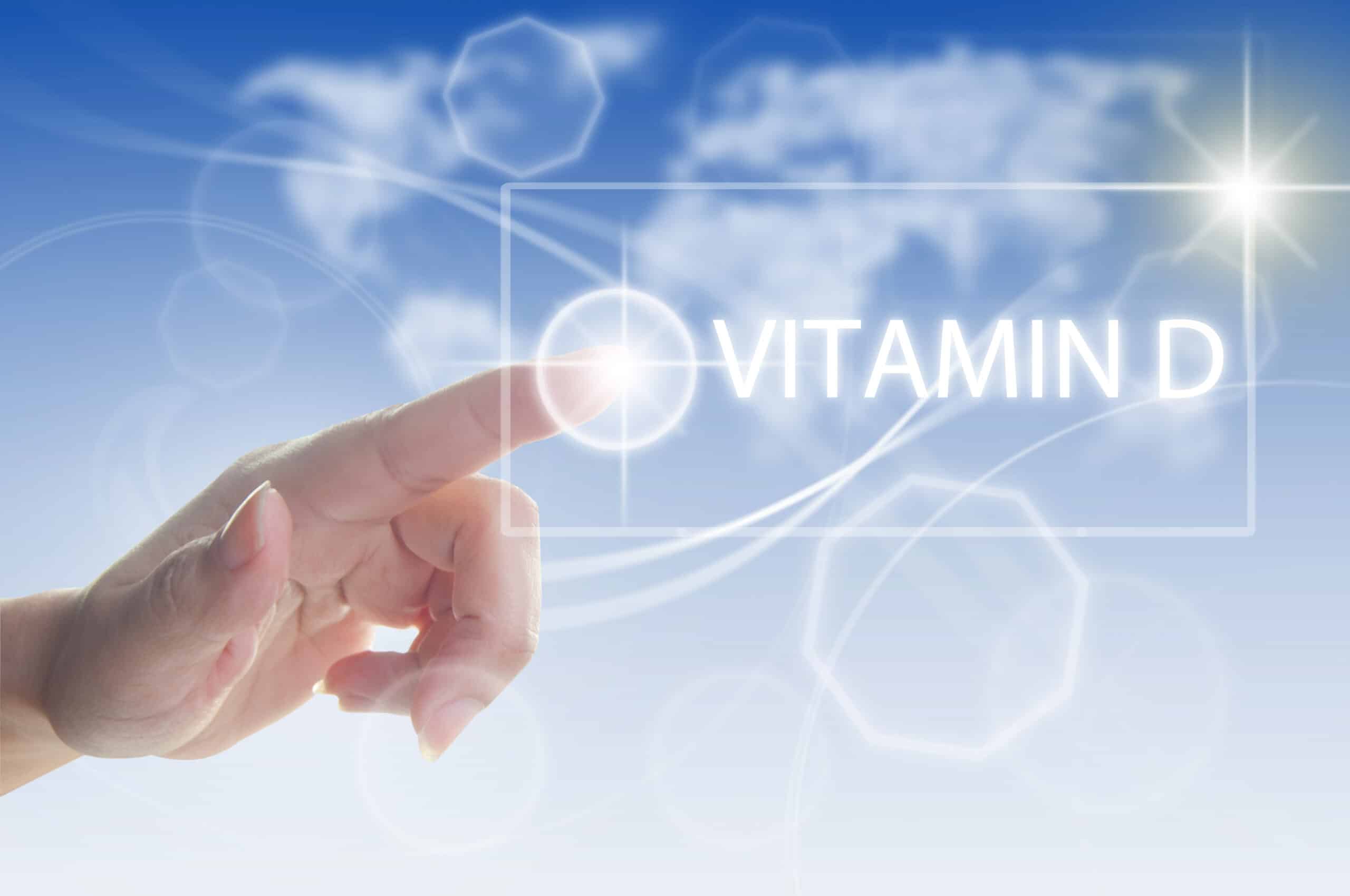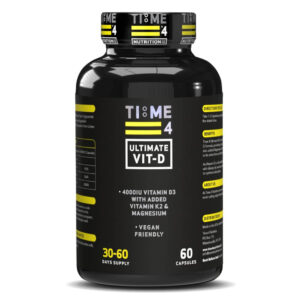WHAT IS THE BEST VITAMIN D SUPPLEMENT?
WHAT IS THE BEST VITAMIN D SUPPLEMENT?
WHAT IS THE BEST VITAMIN D SUPPLEMENT? – THINK YOU KNOW ABOUT TIME 4 ULTIMATE VIT-D THINK AGAIN
(Click on the Reference Numbers in Blue for More Info)
Regardless of whether we are trying to lose weight, gain muscle or just eat more healthily, there is an understandable tendency to focus on the macronutrients, i.e., protein, fat and carbohydrate. Comparatively little thought is often given to vitamins and minerals, which are referred to as micronutrients because we need to consume them in small amounts. Although we may only need them in relatively small quantities, it’s important not to underestimate their importance, as they play a vital role in a huge range of processes within the body essential for optimal health and performance. We have to obtain at least 30 micronutrients from our diet because, for the most part, the body cannot produce them in sufficient quantities. While we should be able to obtain the requisite amounts from the food we consume, this can be difficult for many people, particularly for those who are engaged in intense and prolonged exercise, which can increase the need for certain vitamins and minerals.
One such vitamin, which has received considerable attention recently, is vitamin D. You may be familiar with its role in bone health or perhaps immunity, and have an understanding of how our body can make it from exposure to the sun. While this is true, there is a lot more to vitamin D than you may think, particularly in terms of its ability to enhance health and performance.
In the last decade there has been a large increase in research into vitamin D, which has provided us with a better understanding of the vital physiological role it plays within the body and the scale and effect of vitamin D deficiency, including among athletes.
This has led many athletes to now supplement it as part of their regular nutrition strategies. However, vitamin D does not work in isolation; it is very much a team player, as it requires the presence of other micronutrients to perform its roles effectively. Therefore, in order to optimise the many benefits vitamin D can provide, we need to ensure that we are consuming the requisite amount of a number of other important micronutrients.
This is where Time 4 Ultimate Vit-D can be a valuable addition to your nutrition. Here at Time 4 Nutrition, we pride ourselves on employing the findings of latest cutting-edge research to produce the most effective, innovative, evidence-based products.
In this article, we are going to review a selection of that research and explain how there’s a lot more to Time 4 Ultimate Vit-D than the name suggests and why we think it is the best Vitamin D supplement.
What’s in Time 4 Ultimate Vit-D?
Time 4 Ultimate Vit-D is a potent combination of substances designed to optimise the body’s supply, absorption and use of vitamin D. These include vitamin D3, Vitamin K2, Magnesium and Medium Chain Triglycerides (MCTs).
As we look at each of these ingredients in-depth, you’ll begin to see why Time 4 Ultimate Vit-D is such a great product and how it may benefit you.
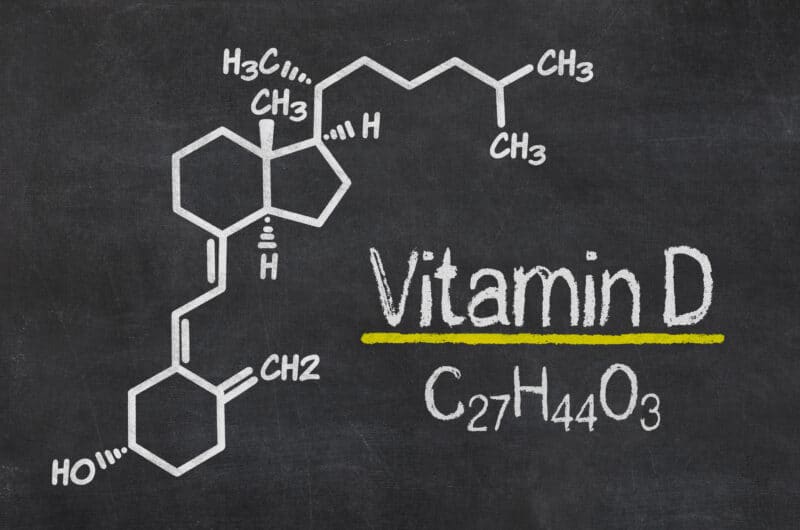
WHAT IS THE BEST VITAMIN D SUPPLEMENT? What is Vitamin D?
Vitamin D is a fat-soluble vitamin, which plays an essential role in many functions of the body. These include promoting calcium absorption in the gut and maintaining adequate serum calcium and phosphate concentrations to enable normal bone and tooth mineralisation and to prevent hypocalcemic tetany (involuntary contraction of muscles, leading to cramps and spasms). It is also needed for bone growth and bone remodelling. Without sufficient vitamin D, bones can become thin, brittle, or misshapen.
Vitamin D has other roles in the body, including reduction of inflammation as well as modulation of such processes as cell growth, neuromuscular and immune function glucose metabolism and maintaining the structure of teeth. It can help to reduce depression, aid weight loss and play a role in muscle growth and repair.
Vitamin D And Genetics
The influence of vitamin D in the body even extends to our genes. Upon activation to 1,25 hydroxyvitamin D31,25(OH)D, vitamin D–responsive gene expression is altered. Gene expression is the process by which specific genes are activated to produce protein required to perform a particular function in the body. Over 1000 vitamin D–responsive genes have been identified. These affect muscle protein synthesis, muscle strength, muscle size, reaction time, balance, coordination, endurance, inflammation, and immunity, all of which are important for health and athletic performance (1).
Not All Forms of Vitamin D Are Equal
There are two main types of vitamin D known as vitamin D3 (cholecalciferol), which is contained in Time 4 Ultimate Vit-D, and vitamin D2 (ergocalciferol or calciferol). Although many supplements contain vitamin D in the form of vitamin D2, the science shows that D3 is more effective at raising blood levels of vitamin D and improving vitamin D status than D2.
For example, a systematic review and meta-analysis by Tripcovik et al., (2) analysed a number of randomized controlled trials (RCTs) that directly compared the effects of vitamin D2 and vitamin D3 on serum 25(OH)D concentrations in humans. When vitamin D enters the circulation, it is converted to a substance known as 25-hydroxyvitamin D3 (abbreviated 25(OH)D₃) in the liver. It is 25(OH)D that is routinely used as a measure of serum (blood plasma) vitamin D concentrations.
The results of the metanalysis showed that that vitamin D3 is more efficacious at raising serum 25(OH)D concentrations than vitamin D2. Therefore, the authors concluded that vitamin D3) could potentially become the preferred choice for supplementation.
A study by Heaney (3) also found that vitamin D3 has been found to increase blood levels significantly more than D2. The results of the study showed that each additional 100IU of vitamin D3 you consume per day will raise your blood vitamin D levels by an average of 1ng/ml (2.5nmol/l).
Interestingly, vitamin D is actually a prohormone. These are substances that the body is able to convert into hormones. Once Vitamin D is absorbed, it is then converted into a hormone (calcitriol) in the liver and kidneys, to help absorb calcium and distribute it throughout the body.
Note: Serum concentrations of 25(OH)D are reported in both nanomoles per litre (nmol/L) and nanograms per milliliter (ng/mL). One nmol/L is equal to 0.4 ng/mL while 1 ng/mL is equal to 2.5 nmol/L.
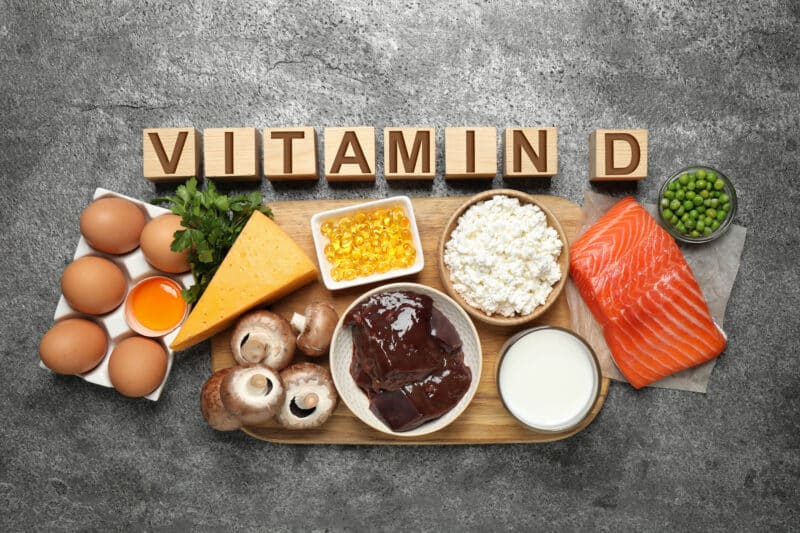
Can I Get Enough Vitamin D From The Sun And Food?
The majority of our vitamin D (80-90%) is produced by our body in response to the skin’s exposure to sunlight. The sun’s ultraviolet B (UVB) rays hit cholesterol in the skin cells, providing the energy for vitamin D synthesis to occur. This is why it is sometimes referred to as the ‘sunshine vitamin’.
In theory, from about late March/early April to the end of September, the majority of people in the UK should be able to make all the vitamin D they need from sunlight with just 15 minutes of exposure to arms and legs 3 times per week. However, in reality this is difficult for many people to achieve, particularly if they are trying to obtain sufficient vitamin D to optimise their levels, rather than just maintain the minimum required to prevent disease.
In the winter, getting sufficient vitamin D from the sun becomes more difficult and supplementation is often advised. Black, Asian and Minority Ethnic (BAME) groups are most at risk, as darker skin produces far less vitamin D than lighter skin from exposure to sunlight. In fact, it requires at least three to five times longer exposure to make the same amount of vitamin D as pale skin. This is because melanin in the skin of black people blocks nearly 99% of vitamin D production. Similar decreases in the skin’s synthesis of vitamin D occur following application of SPF 15 sunblock. Indoor activities, pollution, time of day, increasing age, latitude, and seasonal changes all affect vitamin D production.
Consequently, low vitamin D levels are found in significant numbers of all population groups in the UK: in winter 30-40% of all age groups in the general population are classed as vitamin D deficient. This figure has been shown to be as high as 93% in black and ethnic minority populations. Even towards the end of summer, 8% of adults and 13% of adolescents remain deficient. As we will explain a little later in this article, the level of vitamin D typically classified as ‘sufficient’ is below what could be considered optimal, particularly with regard to athletic performance. Therefore, to be considered ‘deficient’ would indicate that an individual has a vitamin D level below that regarded as the bare minimum to prevent disease and far from what science shows us is optimal for health or performance.
The remaining 10-20% of our vitamin D comes from our diet. However, not all food sources are equal, as the form of vitamin D you obtain from food will depend on the food source.
Generally speaking, vitamin D3 is only found in animal-based foods, while D2 mainly comes from plant sources and fortified foods.
For example, food sources of vitamin D3 include:
• Oily fish and fish oil
• Liver
• Egg yolk
• Butter
• Dietary supplements
Sources of vitamin D2 include mushrooms (grown in UV light), fortified foods and dietary supplements. As vitamin D2 is cheaper to produce, it tends to be the most common form in fortified foods. This can make it difficult for people following a plant-based diet to get sufficient vitamin D3. However, the vitamin D3 contained in Time 4 Ultimate Vit-D is vegan friendly as it is derived from Lichen, one of the very few plant-based vegan sources of vitamin D3 available.
Even if you are consuming animal-based foods, it is difficult to get enough vitamin D from food alone, as few foods provide it and often only in small amounts. Consequently, the routine use of vitamin D supplements is being recommended increasingly.
Regardless of whether your vitamin D is obtained from sun exposure, foods, or supplements, it is biologically inert and must undergo two hydroxylations (chemical process that introduces a hydroxyl group into an organic compound) in the body for activation. The first hydroxylation, which occurs in the liver, converts vitamin D to 25-hydroxyvitamin D [25(OH)D], also known as calcidiol. The second hydroxylation occurs primarily in the kidney and forms the physiologically active 1,25-dihydroxyvitamin D [1,25(OH)2D], also known as calcitriol.
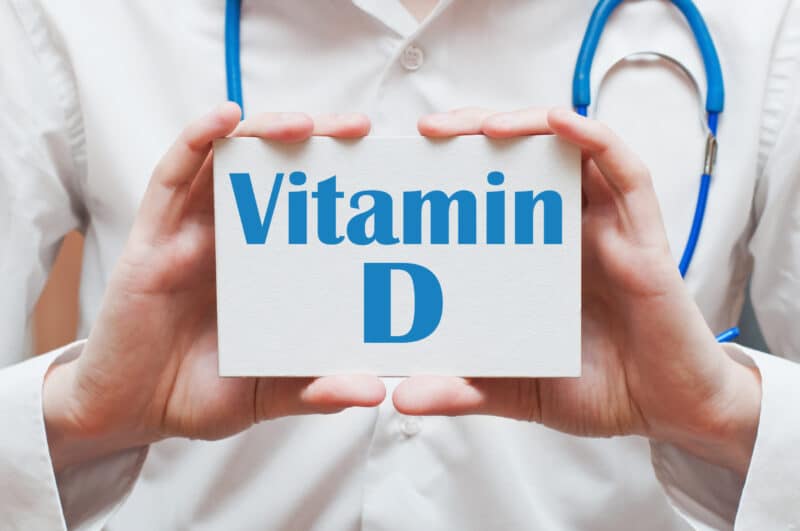
How Much Vitamin D Do We Need?
The body typically requires an estimated 3000–5000 IU/day of vitamin D. The high levels of physical activity in athletes may result in increased physiological demand (4).
Determining exactly how much we need seems to be a matter of debate.
Based on a total serum 25-hydroxyvitamin D (25-OHD), the NHS (Vitamin D – NHS (www.nhs.uk) suggest that vitamin D levels less than 30nmol/L probably indicate vitamin D deficiency and require treatment.
However, some people are potentially at risk of inadequacy at 30 to 50 nmol/L (12–20 ng/mL). Levels of 50 nmol/L (20 ng/mL) or more are sufficient for most people. In contrast, the Endocrine Society states that, for clinical practice, a serum 25(OH)D concentration of more than 75 nmol/L (30 ng/mL) is necessary to maximize the effect of vitamin D on calcium, bone, and muscle metabolism (5).
Like general health, there is no known threshold for optimal performance benefits of vitamin D; however, a number of studies have shown that peak neuromuscular performance is associated with 25(OH)D levels of 50 ng/mL (125 nmol/L), well above those considered sufficient (1). However, at present, there does not appear to be any added sports or health benefit to increasing vitamin D stores above 50 ng/mL, which can be associated with can be associated with adverse effects (1).
Achieving The Right Level Of Vitamin D
The amount of vitamin D is expressed as either micrograms or International Units (IU). A microgram is 1,000 times smaller than a milligram (mg). The word microgram is sometimes written with the Greek symbol μ followed by the letter g (μg). 1 microgram of vitamin D is equal to 40IU. So, 10 micrograms of vitamin D are equal to 400IU. According to the NHS (Vitamin D – NHS (www.nhs.uk)) children from the age of 1 year and adults need 10 micrograms of vitamin D a day. This includes pregnant and breastfeeding women, and people at risk of vitamin D deficiency.
In contrast, The Endocrine Society states that to maintain serum 25(OH)D levels above 75 nmol/L (30 ng/mL), adults might need at least 37.5 to 50 mcg (1,500–2,000 IU)/day of supplemental vitamin D, and children and adolescents might need at least 25 mcg (1,000 IU)/day (5).
During winter months, supplementation with 1000-2000IU per day has been shown to help to correct deficiencies with no side effects. You can take up to a 100 micrograms (4,000 IU) of vitamin D a day without adverse reactions. This applies to adults, including pregnant and breastfeeding women, the elderly, and children aged 11 to 17 years. It is important to note that a number of studies we will look at later in this article have used higher doses but these were for a relatively short period and were monitored with medically supervised blood tests.
Although rare, it is possible for vitamin D to build up and reach toxic levels in the body. Therefore, high dose supplementation (10,000IU per day) can be detrimental and should be avoided unless medically supervised. That said, for severe deficiency a doctor may recommend prescription vitamin D, which comes in much stronger doses of up to 50,000 IU.
Time 4 Ultimate Vit-D provides you with 4000IU in two capsules. This allows you to adjust your intake according to your needs.
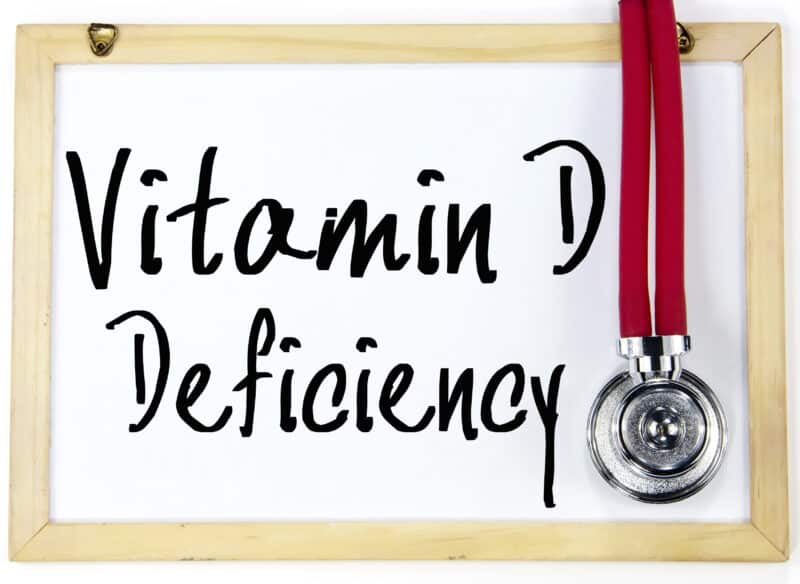
What Are The Symptoms Of Low Vitamin D?
Despite the importance of vitamin D being well acknowledged, deficiency is very common. In fact, it’s estimated that about 1 billion people worldwide have low levels of vitamin D, and the problem seems to be getting worse: deficiency rates have doubled from 1994 to 2004 with multiple factors responsible, including sun avoidance, sunblock use, and increasing obesity rates.
While many people are aware that severe deficiency of vitamin D can lead to bone deformities such as rickets in children, and a condition known as osteomalacia, in which bones become soft and weak, in adults, there are many other less obvious or well acknowledged signs and symptoms of vitamin D deficiency. These include, but are not limited to:
• Increased incidence of illness and infection
• Fatigue
• Bone and back pain
• Muscle pain
• Depression
• Anxiety
• Impaired wound healing
• Bone loss
• Hair loss
• Increased in fat mass (There is an inverse association of serum 25(OH)D and body mass index (BMI) greater than 30 kg/m2, i.e., the higher an individual’s level of body fat the lower their levels of vitamin D are likely to be.
What Increases My Risk Of Vitamin D Deficiency?
Some of the most common risk factors for vitamin D deficiency include:
• Dark skin
• Being an older adult
• Overweight or obesity
• Not consuming sufficient amounts of vitamin D containing foods
• Insufficient exposure to the sun
• Excessive use of sunscreen when exposing the skin to the sun
• Health conditions that affect nutrient absorption, such as Crohn’s disease
• Having gastric bypass surgery
• Using certain medications that impact vitamin D metabolism, such as statins and corticosteroids
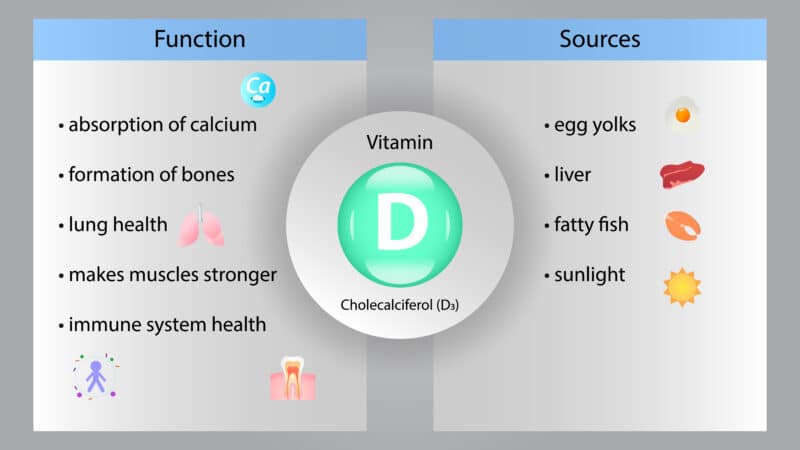
Vitamin D Deficiency In Athletes
Although there is some scientific evidence that suggests that people who exercise regularly are more likely to have high vitamin D levels (6), vitamin D deficiency amongst athletes is common. As we have already seen, the body requires an estimated 3000–5000 IU/day of vitamin D and the high levels of physical activity in athletes may result in an increased physiological need for vitamin D (4). Since vitamin D is actively used in many metabolic pathways, it is possible that athletes may require an increased intake of vitamin D to assure adequate availability and storage for optimal performance (1).
In the US, the incidence of vitamin D deficiency in elite indoor athletes is up to 94% of basketball players and 83% of gymnasts. One would assume that participation in outdoor sports provides an advantage for vitamin D production. However, recent reports including testing of New York Giants – football players during spring practise showed that 81% were vitamin D deficient (1).
Such deficiencies have been shown to negatively impact various aspects of physical performance. For example, a study by Hildebrand et al., (7) found that athletes who had lower vitamin D status had reduced performance scores on Vertical Jump Test, Shuttle Run Test, Triple Hop for Distance Test, and the 1 RM Squat Test.
It is important to note that type II, fast-twitch muscle fibres are particularly sensitive to the effects of vitamin D deficiency. These fibres are extremely important for activities that involve powerful, explosive movements and the lifting of maximal and near maximal loads. Vitamin D deficiency, can result in atrophy of type II fibres and is associated with fatty infiltration and fibrosis (1).
The good news is that supplementation has been shown to be effective in addressing vitamin D deficiency and its negative effects on performance.
For example, a study by Close et al., (8) assessed the vitamin D concentration of a large cohort of non-vitamin D supplemented UK-based athletes and 30 age-matched healthy non-athletes, and examined the effects of 5000 IU per day vitamin D3 supplementation for 8-weeks on musculoskeletal performance. The results showed that 62% of the athletes and 73% of the controls exhibited inadequate serum levels of vitamin (< 50 nmol · l). Vitamin D supplementation increased serum total 25(OH)D from baseline (mean ± SD = 29 ± 25 to 103 ± 25 nmol · l(-1) whereas the placebo showed no significant change. There was also a significant increase in 10 m sprint times and vertical-jump in the vitamin D group whereas the placebo showed no change. The authors concluded that current data supports previous findings that athletes living at Northerly latitudes exhibit inadequate vitamin D concentrations (<50 nmol · l(-1)). Additionally, the data suggests that inadequate vitamin D concentration is detrimental to musculoskeletal performance in athletes.
Similar results were found by Magee and colleagues (9) when they investigated the vitamin D status of elite Irish athletes and determined the effect of supplementation. All athletes exhibited median 25(OH)D levels indicating insufficiency/deficiency (serum 25(OH)D <50 nmol/L). A number of participants were supplemented during the winter months with either 5,000 IU vitamin D3/d for 10-12 weeks or 50,000 IU on one or two occasions. Wintertime supplementation (all doses) significantly increased 25(OH)D (median 62.8 nmol/L at baseline and corrected any insufficiencies/deficiencies in this group. In contrast, 25(OH)D significantly decreased in those that did not receive a vitamin D supplement, with 74% of athletes classed as vitamin D insufficient/deficient after winter, compared with only 35% at baseline.
Does Vitamin D Supplementation Improve Athletic Performance?
It is quite clear that vitamin D deficiency can have an extremely detrimental effect on health and performance, but is there any evidence that supplementation can enhance performance?
A number of recent studies have highlighted vitamin D’s role in building and maintaining muscle, particularly when used in conjunction with amino acid supplementation and resistance exercise (10,11,12).
This is because the exposure of skeletal muscles to vitamin D influences the genetic processes that enhance muscle cell type, function and growth. At the same time, vitamin D suppresses the expression of myostatin, a protein that regulates muscle size by inhibiting growth.
In addition, vitamin D increases the number of type II or fast twitch muscle fibres and in particular that of type IIA cells, resulting in an increase in muscular power output, while its deficiency causes type IIA cell atrophy and a loss of strength (13).
Here are just a couple of examples of the many studies which demonstrate the effectiveness of vitamin D supplementation:
In a review of the effects of vitamin D on skeletal muscle and athletic performance, Abrahams and colleagues (12) noted vitamin D supplementation has been shown to increase muscle strength, particularly in people who are vitamin D deficient. Higher serum levels of vitamin D are associated with reduced injury rates and improved sports performance. In a subset of the population, vitamin D appears to play a role in muscle strength, injury prevention, and sports performance.
Koundourakis et al., (13) conducted a review of the muscular effects of vitamin D in young athletes, non-athletes and the elderly. The muscles are major targets of vitamin D. Exposure of skeletal muscles to vitamin D induces the expression of multiple myogenic transcription factors enhancing muscle cell proliferation and differentiation. At the same time vitamin D suppresses the expression of myostatin, a negative regulator of muscle mass. Moreover, vitamin D increases the number of type II or fast twitch muscle cells and in particular that of type IIA cells, while its deficiency causes type IIA cell atrophy. Furthermore, vitamin D supplementation in young males with low vitamin D levels increases the percentage of type IIA fibres in muscles, causing an increase in muscular power output. Vitamin D levels are strongly associated with exercise performance in athletes and physically active individuals. In the elderly and in adults below the age of 65, several studies have established a close association between vitamin D levels and neuromuscular coordination.
Vitamin D And Cardiovascular Performance
Vitamin D status not only affects muscular performance but also cardiorespiratory performance.
Marawan et al.,(14) investigated the association between vitamin D levels and cardiovascular fitness in a representative sample of the US population using data from the National Health and Nutrition Survey (2001-2004). The results showed that each 10 nmol/L increase in vitamin D level was associated with a significant increase in VO2 max of 0.51 ml/kg/min – 0.78 ml/kg/min.
A study by Al-Dujaili and colleagues (15) investigated the effect of vitamin D supplementation on cardiovascular disease risk factors and exercise performance. A group of healthy participants received either 2000 IU (50 µg) vitamin D3 per day (n = 9) or placebo (lactose) (n = 6) for 14 days. The results showed that vitamin D supplementation significantly reduced systolic blood pressure (SBP), diastolic blood pressure (DBP) and arterial stiffness. Exercise-induced SBP and DBP were significantly reduced post vitamin D intake. The distance cycled in 20 minutes significantly increased, while ratings of perceived exertion reduced. In the placebo group, no significant effects on CVD risk factors nor exercise performance were observed.

Vitamin D And Recovery
In order to optimise exercise performance, we need to optimise recovery. A number of studies have investigated the effects on vitamin D on post-exercise recovery.
For example, Owens et al., (16) investigated the association between vitamin D and skeletal muscle repair, regeneration, and hypertrophy. A randomised, placebo-controlled trial was performed in 20 males with insufficient concentrations of serum 25(OH)D (45 ± 25 nmol/l). Prior to and following 6 weeks of supplemental vitamin D3 (4,000 IU/day) or placebo (50 mg of cellulose), participants performed 20 × 10 damaging eccentric contractions of the knee extensors, with peak torque measured over the following 7 days of recovery. The results of the study showed that supplemental vitamin D3 increased serum 25(OH)D and improved recovery of peak torque at 48 hours and 7 days postexercise. The authors concluded that vitamin D plays a role in human skeletal muscle regeneration and suggest that maintaining serum 25(OH)D may be beneficial for enhancing reparative processes and potentially for facilitating subsequent hypertrophy.
Vitamin D has also been shown to reduce the delayed onset muscle soreness (DOMS) that often occurs following strenuous activity and which can increase the recovery time needed between training sessions. Pilch and colleagues (17) investigated the modulating effect of vitamin D supplementation on muscle cell damage caused by eccentric exercise in young men. The results of the study showed that vitamin D supplementation determined from the plasma concentration of 25(OH)D of individuals to match their specific needs can significantly reduce muscle cell damage induced by eccentric exercise.
Under-Recovered Or Overtrained?
According to Shuler et al.,(1), vitamin D levels can influence immune system function, with increased levels reducing inflammation. Additionally, proinflammatory cytokines such as TNF-alpha and interleukin-6 are increased with lower levels of serum 25(OH)D, especially after intense periods of exercise. This period of increased inflammation has been suggested as one of the potential causes of ‘overtraining’ or ‘overreaching’ syndrome. Therefore, in theory, if athletes increased their levels of vitamin D by supplementation, inflammation would be reduced, and training could be resumed more quickly.
Vitamin D And Body Composition
Vitamin D status is not only associated with improvements in exercise performance and recovery, but also body composition. For example, Carillo and colleagues (18) investigated the impact of vitamin D supplementation on body composition, muscle function, and glucose tolerance in overweight and obese adults during a resistance training programme. Participants were randomly divided into vitamin D (VitD, 4000 IU/d) and placebo groups. Both groups completed 12 weeks of resistance training. The results of the study showed that vitamin D supplementation in overweight and obese adults during resistance training induced an improvement in peak power and was associated with a reduced waist-to-hip ratio.
A similar association between body composition and vitamin D status was found in a study by Vitezova et al., (19). The results of the study showed that subjects with an adequate vitamin D status (25(OH)D ≥ 75 nmol/L) had a lower level of body fat in comparison to those participants who were vitamin D deficient (25(OH)D < 50 nmol/L).
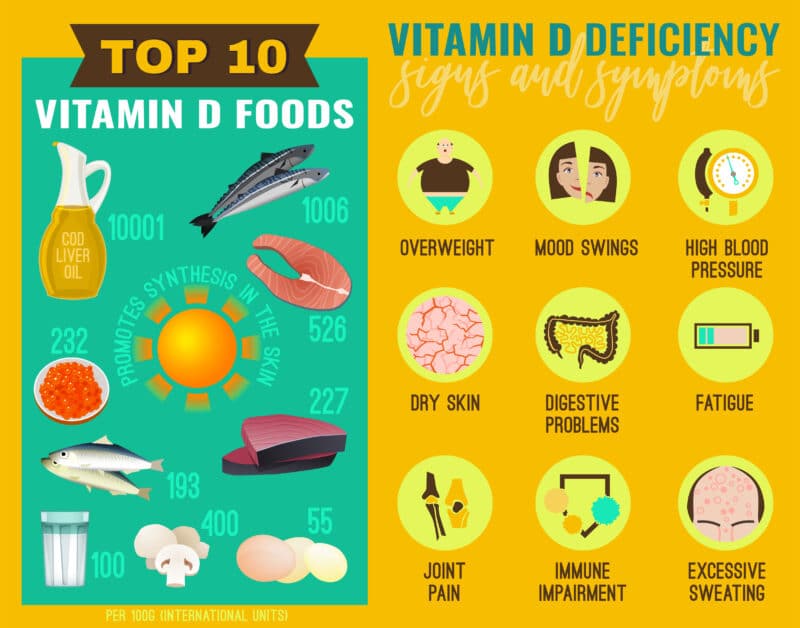
Does Vitamin D Improve Immunity?
Getting ill is a major impediment to training and subsequent improvements in performance. While exercise can enhance immune function, repeated bouts of intense and exhaustive exercise may subdue our immune system, increasing the risk of infection.
Vitamin D’s role in immune function has received considerable attention recently, as there are an increasing number of studies highlighting its role in the prevention and treatment of viral illnesses such as colds, flu and Covid 19.
Baeke and colleagues (20) reviewed the modulating effects of vitamin D on the immune system. They noted that vitamin D targets various immune cells, including monocytes, macrophages, dendritic cells (DCs), as well as T-lymphocytes and B-lymphocytes. Therefore, playing a role in modulating both innate and adaptive immune responses.
Grant et al., (21) reviewed the roles of vitamin D in reducing the risk of respiratory tract infections. The authors noted that, vitamin D can reduce the risk of infections through several mechanisms. These include inducing reactions that can lower viral replication rates and reducing concentrations of pro-inflammatory cytokines which produce the inflammation that injures the lining of the lungs, leading to pneumonia, as well as increasing concentrations of anti-inflammatory cytokines, substances that are secreted by certain cells of the immune system and have an effect on other cells.
Borsche et al., (22) conducted a systematic literature review to identify studies on COVID-19 mortality rates versus blood levels of vitamin D. The results of the review suggest that a theoretical point of zero mortality occurs at a vitamin D3 level of approximately 50ng/ml. The authors concluded that their results provide strong evidence that low D3 is a predictor rather than just a side effect of the infection. Despite ongoing vaccinations, the authors recommend raising serum 25(OH)D levels to above 50ng/ml to prevent or mitigate new outbreaks due to escape mutations or decreasing antibody activity.
As we saw in the introduction to this piece, vitamin D is very much a ‘team player’, as it works closing with other key micronutrients to perform its numerous roles most effectively. These include vitamin K2 and magnesium.
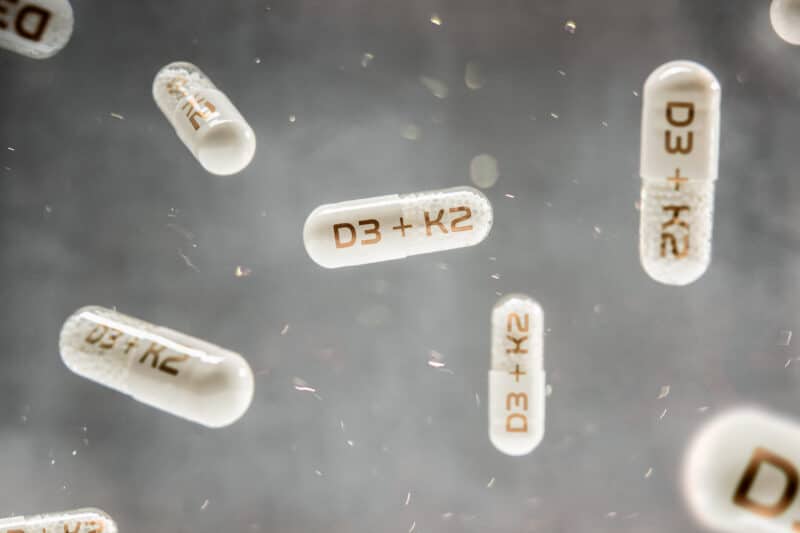
What Is The Best Vitamin D Supplement? – What Is Vitamin K2?
The term ‘vitamin K’ refers to a group of fat-soluble vitamins that play a role in blood clotting, the maintenance of healthy bone, and the regulation of blood calcium levels. Deficiency has been linked to various age-related diseases.
There are two main forms of vitamin K: vitamin K1 (phylloquinone), mainly found in plant foods such as leafy greens, and vitamin K2 (menaquinone), found mainly in certain animal and fermented foods. Vitamin K2 is also produced by gut bacteria in the large intestine. Despite this, the average intake of this important nutrient is low in the modern diet.
Vitamin K2 And Vitamin D
Vitamin K2 is included in Time 4 Ultimate Vit-D because of its role in increasing the enzymes that activate vitamin D made proteins responsible for regulating where calcium is deposited in the body. This not only supports skeletal health, but also prevents the deposition of calcium in soft tissues, including the calcification of the arteries, which contributes to atherosclerosis (the thickening and hardening of the walls of the arteries). Consequently, this helps to keep both your heart and bones healthy. Working together vitamin D and vitamin K2 can also improve insulin levels and blood pressure.
The benefits of Vitamin K2 don’t end there; it has also been shown to enhance athletic performance. A study by McFarlin and colleagues (23) investigated to the effects of 8 weeks of dietary supplementation with Vitamin K2 on cardiovascular responses to a graded cycle ergometer test. Participants were randomly assigned either to a control group that received a rice flour placebo or to an intervention group that received vitamin K2. At baseline and postintervention, participants completed a standard, graded exercise test on a cycle ergometer. The results of the study showed that vitamin K2 supplementation was associated with a 12% increase in maximal cardiac output.

What Is The Best Vitamin D Supplement? – What is Magnesium?
Magnesium is an essential mineral found in all human tissues, especially bone. It is involved in over 300 enzyme reactions and over 600 cellular reactions. These include the replication of DNA, the secretion of parathyroid hormone, which controls bone calcium levels, the function of muscle tissue and the nervous system, and energy production. It also contributes to protein synthesis, electrolyte balance, psychological function and the reduction of tiredness and fatigue.
The body depends on magnesium to convert vitamin D into its active form. It also determines the number of vitamin D receptors, which influences the ability of vitamin D to bind and act on a cell, and is necessary for carrier proteins that transport vitamin D to target tissues in the blood, as well as helping the liver and the kidneys to metabolise vitamin D. Magnesium is a critical factor in making vitamin D bioavailable. Without magnesium present, vitamin D is stored in the body and not used.
We obtain magnesium by eating foods such as nuts, almonds, bananas, beans, broccoli, brown rice, cashews, egg yolks, fish oil, green vegetables, pumpkin seeds, and whole grains. It is one of seven essential macrominerals, minerals which we need to consume in relatively large amounts(100mg or more)to maintain optimal health.
However, like many crucial vitamins and minerals, magnesium is a mineral that many people following a western diet do not consume in sufficient amounts. The magnesium consumption from natural foods has decreased in the past few decades, owing to industrialised agriculture and changes in dietary habits. Magnesium levels are low in populations who consume processed foods that are high in refined grains, fat, phosphate, and sugar.
If an individual is deficient in magnesium, no amount of vitamin D3 supplementation will allow a them to realise the many benefits that vitamin D can provide. In fact, supplementing with vitamin D is not only pointless if an individual is deficient in magnesium, but may actually be harmful. People with low magnesium levels who supplement with Vitamin D show markedly higher levels of calcium and phosphorus.
Excess calcium in the bloodstream can lead to calcification of the arteries. It may also cause nausea, frequent urination, fatigue, and kidney problems such as kidney stones.
Magnesium And Exercise
Like vitamin D and many other micronutrients, magnesium has been shown to be essential for optimal exercise performance. For example, a review by Nielsen and Lukaski (24) noted that magnesium is involved in numerous processes that affect muscle function including oxygen uptake, energy production and electrolyte balance. The review also showed that exercise induces a redistribution of magnesium in the body to accommodate metabolic needs, and that marginal magnesium deficiency impairs exercise performance and amplifies the negative consequences of strenuous exercise (e.g., oxidative stress). Strenuous exercise also increases urinary and sweat losses that may increase magnesium requirements by 10-20%.
Athletes participating in sports requiring weight control (e.g., wrestling, gymnastics) are particularly vulnerable to an inadequate magnesium status. The authors concluded that providing magnesium supplementation or increased dietary intake of magnesium for magnesium deficient individuals will have beneficial effects on exercise performance.
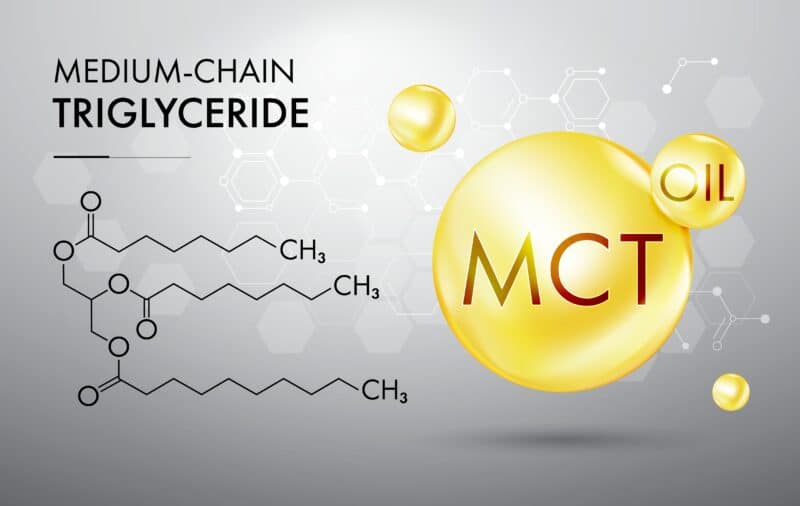
What Is The Best Vitamin D Supplement? – What are Medium Chain Triglycerides (MCTs)?
Vitamin D is best absorbed when consumed with dietary fat. However, this can be difficult if, like many people, you take your supplements with your breakfast, which is predominately carbohydrate based. To help address this, we have also included a small amount of medium chain triglycerides (MCTs). These are partially man-made fats, which also occur in natural sources, such as coconut oil and dairy fat. They are a form of saturated fatty acid which are known to be digested and used to supply energy for activity more readily and completely than long-chain triacylglycerols (LCT). Therefore, they are less likely to be stored as body fat.

What Is The Best Vitamin D Supplement? – Conclusion
The evidence is clear that vitamin D can provide numerous health and fitness benefits, yet many people are deficient in this vital micronutrient, including athletes. If you are living in the Northern hemisphere and have limited exposure to the sun, your vitamin D levels are highly likely to be suboptimal, particularly if you are a member of the BAME community. Such deficiency can not only hinder athletic performance, but can have a profound effect on many aspects of our health. Even with most carefully conceived nutrition plan, it can be difficult to obtain sufficient vitamin D from our diet alone, particularly in the winter months. The science shows us that this deficiency can be corrected quite easily by effective oral supplementation. This has led to an increasing number of authorities to recommend supplementation. However, increasing vitamin D levels without ensuring an adequate intake of vitamin K2 and magnesium, both of which are essential for its absorption and metabolism, can be ineffective and even potentially damaging. Consequently, up until now, this has resulted in the need to purchase and consume several different supplements if the recommended levels of each are to be achieved. This is where Time 4 Ultimate Vit-D can be a valuable addition to your nutrition programme, as it not only provides up to 4000 IU of vitamin D3, but also recommended amounts of vitamin K2 and magnesium with additional MCTs in easy to swallow capsules. This gives you the freedom to adjust the dose according to your needs at a particular time. Given the importance of vitamin D and the prevalence and impact of suboptimal levels, can you afford to neglect this vital micronutrient?
If you enjoyed this “What is the best Vitamin D Supplement” article please click the link below for further info.
